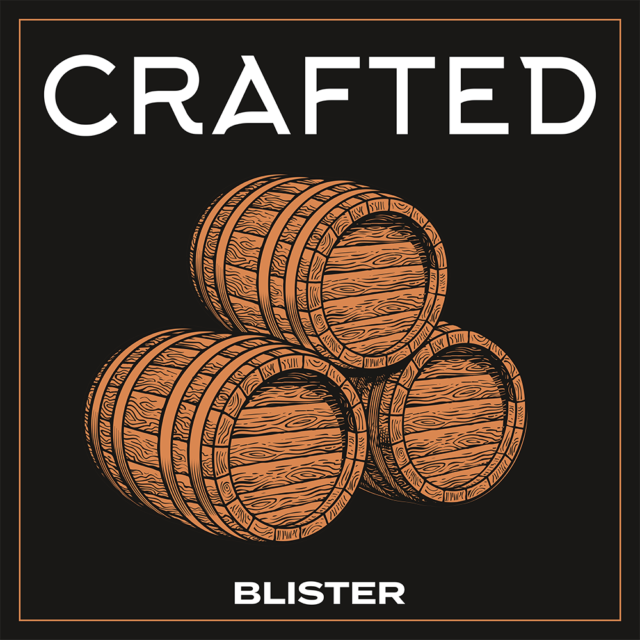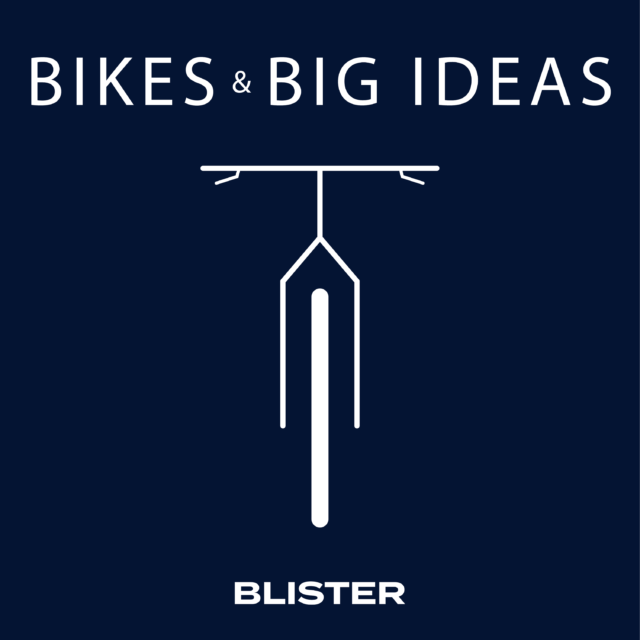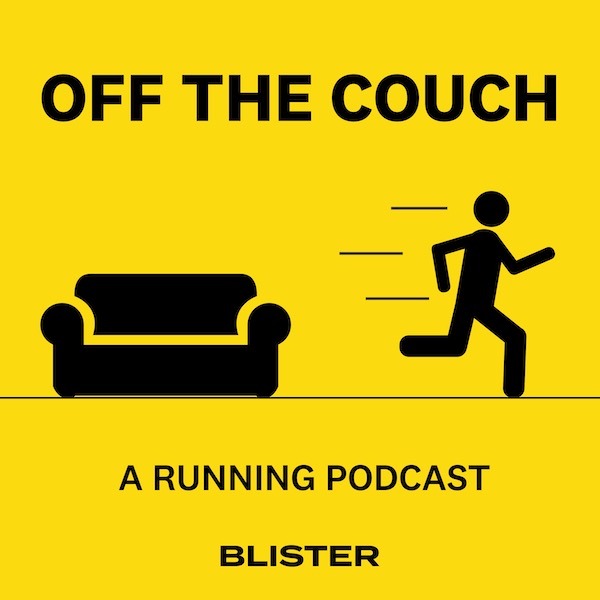



Leave a rating and / or review in the Apple Podcast app or on the Spotify app.
This free, 30-second action on your part lets us know you value all the time & energy that goes into producing & publishing GEAR:30, and it ensures that we can keep the show going.
How to Leave a Rating / Review on Apple Podcasts
- Open the Apple Podcast App
- (if you’re on your phone, simply click this link)
- Go to the icons at the bottom of the screen and choose “search”
- Search for “GEAR:30”
- Click on the SHOW — *not* the specific episode
- Scroll down to “Ratings and Reviews”
- Click on “Tap to Rate” and leave us a 5-Star Rating!
- Below that, you can click Write a Review if you’d like to share a few words
How to Leave a Rating on Spotify
- Currently, you can only rate a podcast in the Spotify mobile app
- (if you’re on your phone, simply click this link)
- Navigate to the GEAR:30 show on Spotify (not to a specific episode)
- Tap the star icon underneath the podcast description and if you like the show, leave a 5-star rating
- On Spotify, you need to listen to at least one episode before you can rate a podcast.
Interested in ski design? Curious about where the next advancements in ski design might come from? Dr. Sean Humbert is back on GEAR:30 to provide an update on our Blister Labs’ ski flex project, and to go over some of the results and takeaways from the on-snow ski testing and dynamic modeling that we worked on this past ski season. Blister Labs is a partnership between BLISTER and the Western Colorado University – CU Boulder Partnership Program.
RELATED LINKS:
The Published Paper on this Project
BLISTER+: Get Yourself Covered
TOPICS & TIMES:
Project Overview (3:23)
In-Field Testing & Results (6:08)
Bindings & Ski Flex Patterns (24:45)
What’s Next (35:54)
Published Paper (44:13)








Neat! I bet the ‘stiffening effect’ of a look pivot would be way less than your demo bindings; which do you use? That would be really interesting to take a really soft ski and measure how it flexes with all the different bindings mounted, with a boot.
From our understanding, limiting surface contact area between binding and ski is a key design focus of the Look Pivot, specifically to allow the ski to flex more “naturally/freely.” Most binding manufacturers are aware that bindings have an impact on ski stiffness and take measures to reduce that impact. We used two demo bindings (Marker Griffin Demo and Tyrolia Attack Demo) which both have large binding plates to allow for multiple boot sizes to fit; unfortunately, the inclusion of these binding plates emphasize the impact the bindings have on each ski’s stiffness. Blister is in the process of testing multiple different bindings on the same ski qualitatively, it’s a possibility that we could measure the stiffness/bending profiles of each of those skis to see how each binding changes the stiffness of the same ski.
Very cool; thanks for the info. Neat work, thanks! I guess a lot of readers will eventually want to see a table like this to make their buying decisions:
Binding, ‘Mid Ski Stiffness Quantified#’, Ski
Demo Binding With Plate, 120, Line Blend
Regular, Binding1, 105, Line Blend
Regular, Binding2, 102, Line Blend
Demo Binding With Plate, 305, Fischer RC4 Curv
Regular Binding1, 302, Fischer RC4 Curv
Regular Binding2, 301, Fischer RC4 Curv
Thanks for the good work!
ack… and for science include the flex without a binding! :)
The piece about the influence of bindings is interesting. Something like an old Deflex plate would essentially standardize how a ski flexes, since it would be less subject to mount point/BSL variation. I wonder if a modern version of that (e.g. a sheet of carbon) could be useful on a non-race ski to tune the effective flex.
Binding plates/risers are something ski racers pay close attention to, and it would be interesting to see if using a similar concept on non-race skis could allow consumers to fine tune the flex characteristics of their skis. It’s not something we are currently looking into, but something worth time in the future.
Did you test the Bonafide and the Rustler with the same bindings? If you did, why would the increase in stiffness not be the same on both skis?
Would the large difference in geometry between both skis (camber, rocker length, running length) not be enough to explain the differences in on-snow ski testing?
Each ski had a different binding, the Bonafide had a set of Marker Griffin Demo bindings, and the Rustler 11 had the Tyrolia Attack Demo bindings. These were the bindings that Blister conducted their qualitative reviews of each of these skis on, so for the sake of trying to make correlations between qualitative review and quantitative analysis we felt it best to leave the bindings as they were.
Camber/Rocker profiles and running length of a ski can have quite a large impact on ski performance and is something we will be trying to dig into further with our next stage of analysis. Once we finish the modal analysis of each ski, we can start to separate ski characteristics such as stiffness or damping from camber or running length and deduce how each of those might impact on-snow performance.
Great research which should yield greater understandings of ski-binding-snow interactions and dynamics. A few questions:
1. Regarding the “binding effect”, was the resulting data recorded with or without boots in the ski binding?
2. Does the data indicate the variance in the binding effect was due to variations in the mounting hole patterns and/or the actual contact surface area of each binding component?
Great stuff Blister! Thanks
The authors miss this paper
https://link.springer.com/chapter/10.1007/978-2-287-09413-2_77
Thank you for the paper reference! There’s some good and relevant information in the here that we will be using to influence our next stages of analysis.
Glad that you found it interesting.
PS: I’m one of the authors.
I have used been skiing Elan rip sticks for years from proto types to in line models mostly 106 , 96 and on the right day 116
all are mounted with attacks except for sets that have tec on them , binding difference is huge tec have no reason to be at resorts for lots of reasons , for me binding set up can change a ski a lot ,different toe heights , min or max forward pressure all these differences then show up in my boot set up as my final set up .
The testing your doing is not easy so much to study !
I have a hard time with reviewers that i haven’t seen ski , videos of the reviewers in different conditions would help , match your style to theres and see what the computer gives you .
Still love the cool factor of a ski!
Ideally this study could eventually lead to a tool that would provide consumers with quantitative metrics to reference when purchasing a ski; these metrics will hopefully reduce the uncertainty of what the ski might be good at or who it’s good for, allowing people to make more informed decisions. We would agree that it can be hard to find an ideal pair of skis with qualitative reviews alone, since they might give you a good idea of the ski’s intended purpose, but it’s difficult to deduce if the ski fits your skiing style or specific terrain/condition requirements from someone else’s experiences. The goal of Blister Labs is to marry the qualitative reviews of experts with objective measurements from quantitative analysis to provide consumers with as much information as needed to find that perfect pair of skis.
Interesting podcast. I am a practicing Mechanical Engineer and what Sean is doing is right in my sweet spot. Good move, Jonathan in “slowing Sean down”. I am still not comfortable with Sean’s two terms, skier confidence and efficiency. I get everything he said, and I know what those words mean, but he did not get “granular” enough about what they mean for a skier on a ski. Does confidence mean trust in your edge hold on the surface? Does confidence mean how fast you are will to go in a carved turn without being scared? I am always confident on a pair of skis, but I often make adjustments for conditions (as does everyone else). My adjustments might be different than Luke’s. I take “confidence” in Sean’s context to mean how forceful someone is willing to lay into a carved turn, ie. how high an edge angle and are the turns carves versus skidded turns or pivoted turns. I honestly don’t know what that term means in Sean’s context.
Efficiency is another unusual term. I get “flapping” or “chattering” is low efficiency and maybe that is the key. If there is low “content” or spectral density in the mid freq. bucket, then that means there is high content in the high freq. bucket and the ski is efficient. Or visa versa for an inefficient ski. An inefficient ski chatters and an efficient ski does not. Simple as that ??
The binding changing the skis flex is very interesting and although that has been known for a while, the extent of the effect does seem like a break through in our understanding. I would also suggest Sean put a boot (any boot) in the binding when doing his flex measurements. When a ski bends concave (curved up) the boot gets squeezed in the binding and that will also create an effect. It might be minimal due to spring preload in the binding, but it would be interesting to find out if that is the case. In the podcast, there was a focus on tech versus downhill bindings, and rightfully so, but that is just one aspect. Its just as important to consider the mounting location of each toe and heel piece, and also how many screw attachment points each toe and heel piece have. As well as how far the screws are spaced apart and how stiff the “body or frame” of the toe and heel piece are. Even each alpine binding is somewhat different without getting into tech, or race plates, or demo bindings. Some race type bindings have two solid mount screws and two that fit in slots in the binding to allow for ski flex independent of binding flex. Lots to unpack on that topic. Does Blister publish how it does its flex measurements? I hope Sean’s paper explains how they do it. I plan to read it.
This does not even consider the flex or stiffness of the ski boot, which is really a different subject all together. I would assume the soles of all ski boots will act similarly in a ski binding, meaning you can consider them rigid. The ski boot shell and cuff, however, are far from rigid and that is what I think Sean has a student working on (ski boot flex ratings). That is really the boot/skier interaction, which is not the same thing as ski stiffness. How much force is transmitted through the boot/binding interface to ski will be impacted by ski stiffness, but its a more complex model and it would be wise to separate the two for initial study.
Very interesting work and lots to unpack over time. Looking forward to future updates
Great questions. This is the preliminary set of conclusions from our first stage of quantitative analysis. We are planning on conducting modal analysis in-lab followed by force/deformation modeling to try to get a clearer picture as to what characteristics of a ski cause different experiences on-snow. What we presented here is a combination of in-lab stiffness measurements and in-field time-series analysis, which can highlight some key differences between skis, but it doesn’t show the whole picture.
“Confidence” in the context of the podcast is specifically in regard to the skier’s ability to trust the edge of a ski during a carved turn, which we understand can mean a couple different things depending on the skier. For these two skis and the group of skiers testing, we could “trust” the Bonafide more, meaning that we could really lean into the tips of the skis and drive the front edge of the ski through a turn without having to worry too much about the tail edge releasing or conditions adversely effecting the skis’ ability to maintain edge hold. “Efficiency” is a term Josh decided to use to describe a ski’s ability to absorb variations in terrain/conditions and maintain edge contact/hold with the snow. This is a ski characteristic caused by a combination of stiffness in bending and torsion, damping, and ski shape (camber, running length, etc). When looking at the frequency analysis of the Bonafide compared to the Rustler, we could see that the Bonafide did a much better job at reducing/absorbing vibrations in (15-75Hz) range, which we currently think is the range that perceivable “chatter” or “flapping” occurs. Your understanding of the term is pretty spot on; we couldn’t think of a better term to explain a ski’s ability to mitigate chatter and displace that energy into a frequency range that is not perceivable to the skier.
As mentioned, we are planning on conducting modal analysis of the skis. We will test each ski with and without a boot to see how it affects the natural frequencies, mode shapes, and dampening of each ski. Unfortunately, the way we measure the bending and torsional stiffness of the skis doesn’t allow us to put a boot into the binding. (We are using the ski flex test rig at Western Colorado University, which is another project under Blister Labs.) We will include pictures and a more in-depth explanation of how it works in our paper. But in short, we put the ski into a rig that induces three-point bending/twisting phenomena. Using an inclinometer and force gauges, we can estimate the EI and GJ curves using the measured curvature and change in angle from measurement locations.
We do have another student looking into ski boot stiffness quantification, but as it stands right now, we have not accounted for how the boot stiffness/flex might affect the skis stiffness. All our testers had different boots and boot sizes, and we understand that the boot is an extremely personal item in the ski equation — and as you mention is an important part of that equation. Currently, it remains to be seen how best to incorporate the boot into the overall analysis given the nonlinear characteristics of the boot and its interaction with the ski/binding. So we plan on studying them separately for now and hope to marry the two when we have a better understanding of each in isolation.
“Did you test the Bonafide and the Rustler with the same bindings? If you did, why would the increase in stiffness not be the same on both skis?”
That issue was discussed on the podcast. The different binding mount position makes a difference. The Bonafide’s factory line is further back than the Rustler line is what was said. The bindings look similar on those two skis, the head is a little different from the picture, although they didn’t elaborate on that detail.
Well, from the data on SoothSki, it looks like the bending stiffness profile of the Bonafide and the Rustler 11 are both centred around the recommended mount point (it is hard to say for sure, only Blizzard designers would know). That means that if you mount the binding/rails on both skis for the same boot size around the recommended mount point, you would hit the same points on the bending stiffness profile.
These are two skis with very different geometry. For their respective lengths and widths, the Bonafide has one of the longest running lengths, while the Rustler has one of the shortest. The same is true of camber. This changes how the ski interacts with the snow and will change its vibrational response. I mean, if you consider the tip flapping around, would you think that moving a binding around by about 3cm has more influence than making the tip rocker twice as long (40 cm instead of 20)? Maybe they considered that fact in their analysis, but it was unclear to me if they did from listening to the podcast…
We used different bindings on each ski, the Bonafide had a set of Marker Griffin Demo bindings, and the Rustler 11 had the Tyrolia Attack Demo bindings. Both skis were skied on the factory recommended mount point, the Rustler’s mount point is -7.6cm from center and the Bonafide’s is -11.0cm from center. Both mount points are indicative of each ski’s purpose, and we do think that plays a large role in how a ski performs on snow. After measuring ski stiffness profiles, we can see that not just the shape of the ski but the stiffness is also specifically designed around the recommended mount point of a ski. It would be interesting to hear from ski manufactures if that’s specifically for on-snow performance or more for binding retention, or both. With our preliminary quantitative analysis, we can’t say whether the shape or stiffness of the ski has a larger impact on on-snow performance; we do plan on conducting modal analysis of each ski which can shed some light on dampening characteristics, which will then allow us to (1) start separating shape-related and stiffness-related ski characteristics, and (2) determine which one or combo of both causes specific on-snow experiences. We do think that an increase in rocker will result in more tip flap, and moving the mount point forward is a way of combating that side effect. Interestingly, when comparing IMU stations with similar relative positions on each ski, we do see differences between skis. Whether that’s a byproduct of mount point, stiffness, or shape is still something left to be answered, but it’s obviously not entirely dependent on the length of the lever arm from boot center to the measured point on the ski (i.e., the mount point is not the only or most important factor when looking at the frequency analysis). Our next stages of analysis hope to answer that question.
Is there any plan to quantify ski efficiency vs. skier inputs over the lifetime of a ski, as a proxy for ski fatigue?